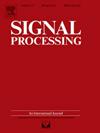用主题导向图对抗网络学习可转移表征
IF 3.4
2区 工程技术
Q2 ENGINEERING, ELECTRICAL & ELECTRONIC
引用次数: 0
摘要
为了减少对目标领域中昂贵的标记数据的需求,需要从相关的源领域学习可转移的表示,在那里可以获得标记数据。面对不同域间分布的转移,通常通过特征级对抗学习来对齐边缘特征分布。尽管最近取得了成功,但现有的方法往往忽略了特征和标签之间的一致性,这是一个具有挑战性的问题,因为在目标领域没有监督。因此,我们有动力将鉴别信息从源域转移到目标域,以实现更好的域对齐。为此,我们提出了一个主题导向图对抗网络(TGAN),由图构造器、图特征提取器、域鉴别器和分类器组成。具体来说,为了学习描述不同领域样本之间关系结构的图,我们提出了一种语义解纠缠主题模型来提取领域共享和领域特定主题,从而可以通过领域共享语义空间中的样本相似度来定义图边。然后,TGAN聚合源节点的判别特征,并通过图中传递的关注消息将其传播到目标节点,最后的节点嵌入用于源和目标域之间的对抗学习。TGAN在情感分类和临床风险预测任务上取得了最先进的性能。此外,发现的领域不变的判别主题具有可解释的意义,这有利于理解预测结果,特别是生物医学研究。本文章由计算机程序翻译,如有差异,请以英文原文为准。
Learning transferable representations by topic guided graph adversarial network
To reduce the need for costly labeled data in a target domain, it is desirable to learn transferable representations from a related source domain, where it is feasible to obtain labeled data. Facing distribution shift between different domains, one often aligns the marginal feature distributions by performing feature-level adversarial learning. Despite the recent success, existing approaches often ignore the consistency between feature and label, which is a challenging problem since there is no supervision in the target domain. Hence, we are motivated to transfer the discriminative information from the source to the target domain to realize better domain alignment. To this end, we propose a topic-guided graph adversarial network (TGAN), composed of a graph constructor, a graph feature extractor, a domain discriminator, and a classifier. Specifically, to learn a graph describing the relational structure among samples from different domains, we propose a semantic disentangled topic model to extract domain-shared and domain-specific topics, so that the graph edges can be defined by the sample similarities in a domain-shared semantic space. Then, TGAN aggregates the discriminative characteristics of source nodes and propagates them to the target nodes by attentive message passing through the graph, with the final node embeddings used for adversarial learning between source and target domains. TGAN has achieved the state-of-the-art performance on sentiment classification and clinical risk prediction tasks. Moreover, the discovered domain-invariant discriminative topics show interpretable meanings, which is beneficial to understanding the prediction results, especially for biomedical researches.
求助全文
通过发布文献求助,成功后即可免费获取论文全文。
去求助
来源期刊

Signal Processing
工程技术-工程:电子与电气
CiteScore
9.20
自引率
9.10%
发文量
309
审稿时长
41 days
期刊介绍:
Signal Processing incorporates all aspects of the theory and practice of signal processing. It features original research work, tutorial and review articles, and accounts of practical developments. It is intended for a rapid dissemination of knowledge and experience to engineers and scientists working in the research, development or practical application of signal processing.
Subject areas covered by the journal include: Signal Theory; Stochastic Processes; Detection and Estimation; Spectral Analysis; Filtering; Signal Processing Systems; Software Developments; Image Processing; Pattern Recognition; Optical Signal Processing; Digital Signal Processing; Multi-dimensional Signal Processing; Communication Signal Processing; Biomedical Signal Processing; Geophysical and Astrophysical Signal Processing; Earth Resources Signal Processing; Acoustic and Vibration Signal Processing; Data Processing; Remote Sensing; Signal Processing Technology; Radar Signal Processing; Sonar Signal Processing; Industrial Applications; New Applications.
 求助内容:
求助内容: 应助结果提醒方式:
应助结果提醒方式:


